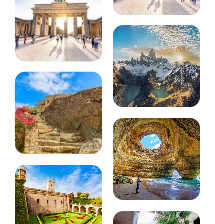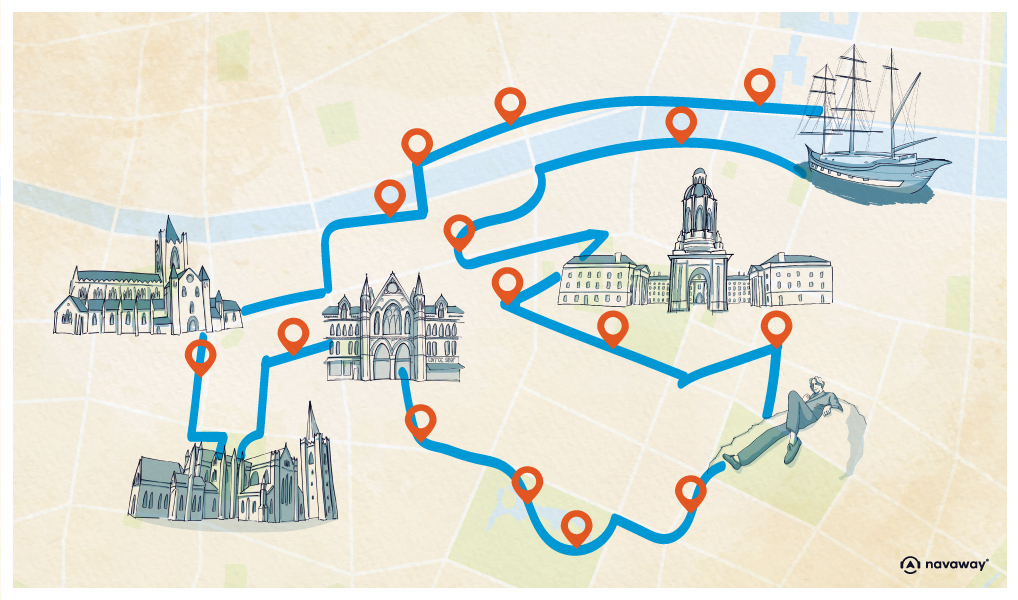
Halloween traditions and celebrations around the world

Every year on 31 October, Halloween returns, a mysterious celebration that combines fright and festivities. While the celebration is now world-famous for its carved pumpkins, spooky costumes and famous candy hunt, few people realise that Halloween is celebrated in many different ways in different countries and cultures. From Ireland, the birthplace of the Celtic tradition of Samhain, to Mexico with its vibrant Día de los Muertos, and Transylvania with its vampiric legends, each destination celebrates in its own way the fine line between the world of the living and that of the dead. Let’s set off together to discover these Halloween traditions from around the world, reminding us that this festival extends far beyond American borders.
200 audioguided tours for cities all around the world
DownloadRead more on this subject:
- 5 secret Luberon villages to explore in autumn
- 5 of the most beautiful villages around Lyon to visit this autumn
- Japan: Top 9 most beautiful autumn landscapes
- The 5 most beautiful villages around Nantes to discover this autumn
- Autumn in Thailand with Loy Krathong, the Lantern Festival.
- Festival of Lights: Berlin lights up magically
1. Ireland: the birthplace of Halloween and the tradition of Samhain
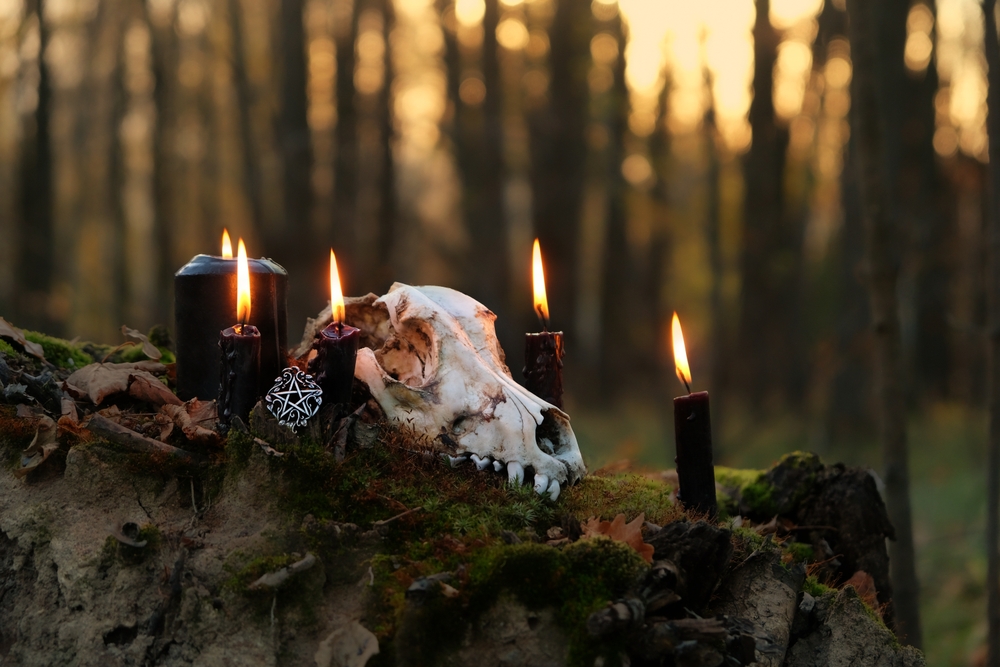
Ireland holds the title of founding country of Halloween. The festival has its roots in Samhain, a Celtic celebration dating back over 2,500 years that marked the end of summer and the beginning of the dark season. According to Celtic beliefs, the night of 31 October allowed spirits to cross the boundary between the world of the living and that of the dead. To protect themselves from these evil entities, the Irish lit bonfires and dressed up as frightening creatures.
Even today, Ireland’s Halloween traditions perpetuate this ancestral heritage. In Dublin, the capital, the spectacular Samhain Halloween Parade takes place every year, a colourful parade where ghosts, witches, zombies and goblins take to the streets. But it’s in Derry, in Northern Ireland, that you’ll find the most impressive celebrations in Europe. The city has established itself as the must-visit destination for Halloween: street carnivals, monumental bonfires, spectacular fireworks displays and terrifying entertainment attract thousands of visitors from all over the world.
The Irish tradition of barmbrack is also worth mentioning. This fruit cake, traditionally prepared for Halloween, conceals small objects, each with a meaning: a ring predicts marriage, a coin heralds wealth, while a piece of cloth suggests poverty. This age-old custom of divination is still an integral part of Halloween celebrations throughout Ireland.

2. Mexico: Día de los Muertos, a joyous celebration of life
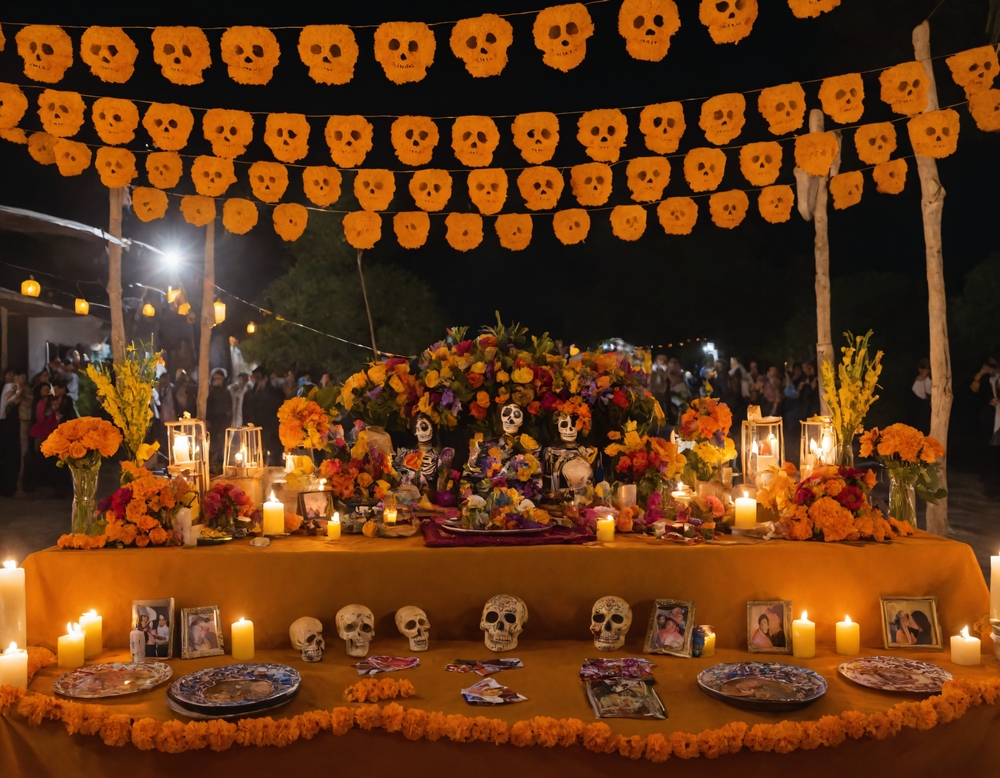
In Mexico, Halloween takes a radically different turn with the Día de los Muertos (Day of the Dead), which takes place on 1 and 2 November. Unlike the macabre and frightening vision of Halloween in Anglo-Saxon countries, this Mexican festival is a genuine celebration of life and a joyous tribute to the dead. Far from being a period of mourning, Día de los Muertos represents a moment of communion between the living and the dead, when it is believed that the souls of the deceased return to visit their loved ones.
The streets of Mexico City and the rest of the country are decked out in brilliant colours. Families create richly decorated ofrendas (altars) in their homes and on tombs, adorned with cempasúchil (orange marigolds), candles, photographs of the deceased, and their favourite foods. The famous colourful calaveras (sugar skulls) and pan de muerto (bread of the dead) are prepared especially for the occasion.
Mexicans wear sophisticated skeleton make-up, called catrinas, and take part in impressive parades. In San Miguel de Allende, north of Mexico City, the Festival La Calaca offers a whole week of festivities, with night parades, art exhibitions, traditional music and culinary tastings. This Mexican tradition, recognised as an intangible cultural heritage by UNESCO, is a perfect example of how Halloween can be transformed into a unique celebration depending on the culture.
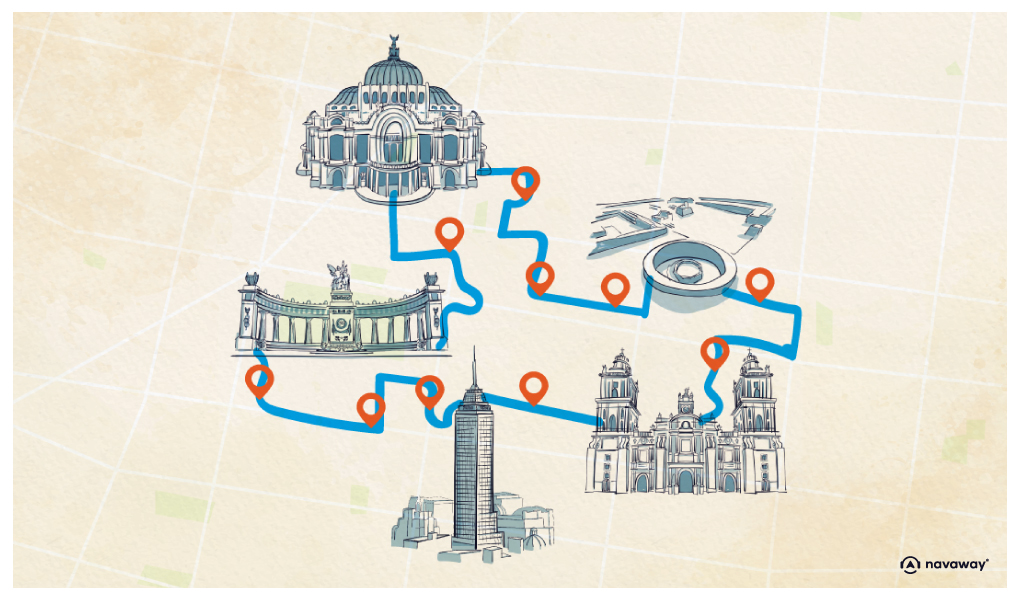
3. United States: modern Halloween and its emblematic traditions
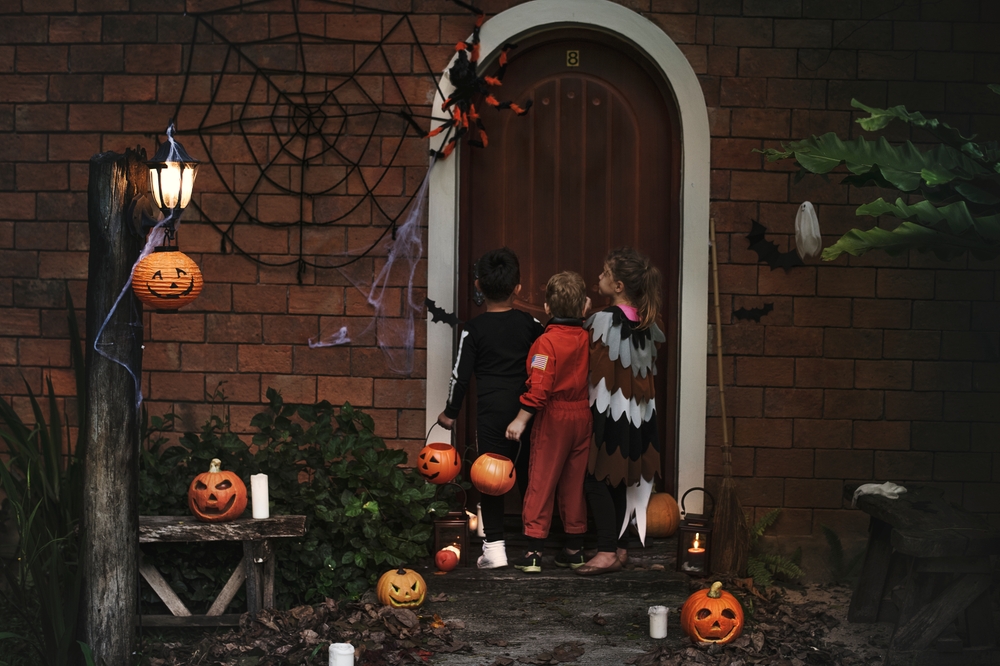
The United States has transformed Halloween into a cultural and commercial phenomenon. Irish and Scottish immigrants brought the tradition to America in the 19th century, where it evolved into the festival we know today. The famous “trick or treat” has become the very symbol of American Halloween, with millions of children dressed up and scouring the neighbourhoods on the evening of 31 October to collect treats.
Americans compete to decorate their homes with carved pumpkins (jack-o’-lanterns), spider webs, ghosts and skeletons. Some residential areas are transformed into veritable tourist attractions by their elaborate decorations. Professional haunted houses offer terrifying tours for thrill-seekers.
In New Orleans, Louisiana, Halloween takes on a special mystical dimension with its voodoo roots. The Voodoo Music Experience, held shortly before Halloween, attracts world-renowned artists. Bars in the French Quarter play traditional voodoo music, while markets selling esoteric items take over the macabrely decorated streets. This unique atmosphere makes New Orleans one of the most popular destinations for celebrating Halloween in the United States.
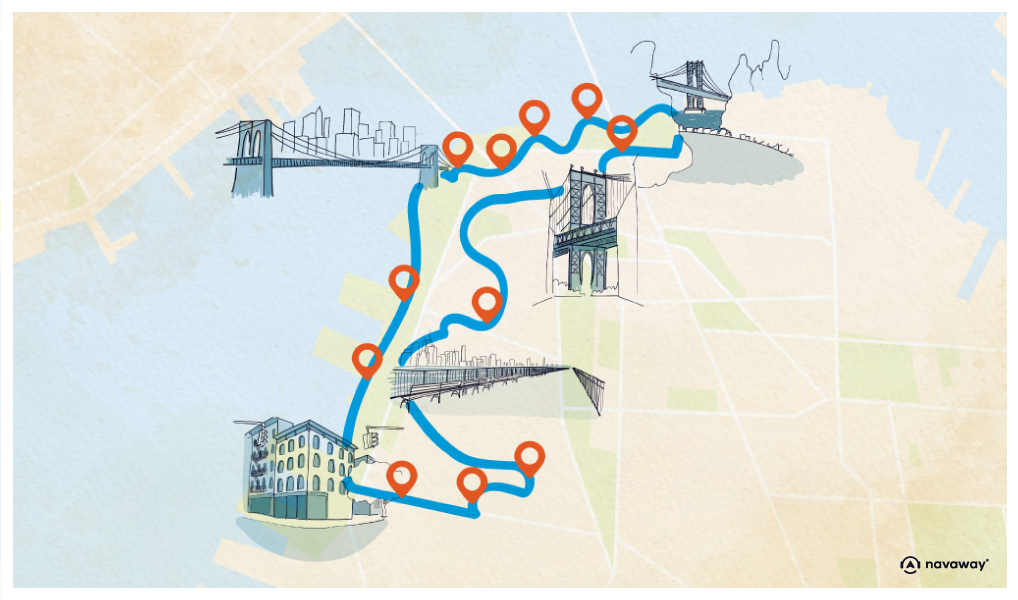
4. Transylvania: following in Dracula’s footsteps in Romania
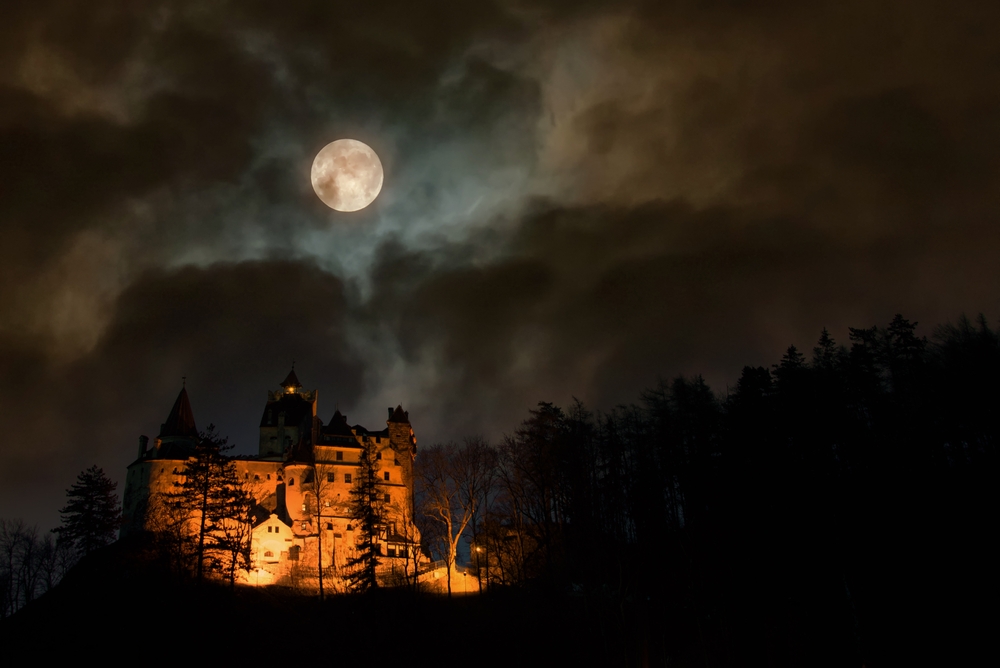
What better way to celebrate Halloween than in Transylvania, the homeland of the famous Vlad the Impaler, who inspired the character of Dracula? The Romanian town of Sighișoara, the 15th-century birthplace of the Wallachian prince, offers the perfect medieval setting for authentic, chilling Halloween celebrations.
As Halloween approaches, the cobbled streets of this fortified town are decked out in ghoulish decorations. Medieval festivals are held in the surrounding castles, recreating the atmosphere of ancient times with period costumes, traditional music and banquets. The Vampire Festival attracts visitors from all over the world, who come to meet witches, vampires and other fantastic creatures roaming freely through the dark streets of the old town.
Not far away, Bran Castle, often associated with the myth of Dracula, offers special night-time tours for Halloween. The Gothic atmosphere of this fortress perched on a rocky promontory, with its imposing towers and secret passages, offers an unforgettable experience for fans of vampire stories. Transylvania transforms the literary legend into a unique tourist experience where history, folklore and Halloween meet.
5. England: age-old traditions and modern celebrations
England, like Ireland and Scotland, has Halloween traditions that are deeply rooted in its history. The Anglo-Saxon festival of All Saints’ Day blends here with pagan customs to create unique celebrations. A particularly interesting ancient tradition is that of “soul cakes”: in the past, the poor went from door to door on 2 November to receive these little cakes in exchange for prayers for the family’s deceased. This custom is considered to be the ancestor of the modern ‘trick or treat’.
In London, Halloween is celebrated in style. The London Ghost Festival offers guided tours of the capital’s reputedly haunted sites: the Tower of London with its royal ghosts, the dark alleys of Whitechapel where Jack the Ripper was rampaging, and the old theatres of the West End with their legendary spectres. These night-time tours offer a different perspective on London’s macabre history.
English pubs also play an important role in the festivities, organising costume parties and fancy dress competitions. In the English countryside, particularly in Yorkshire and Lancashire, the old tradition of “guising” is still carried on, where children dress up and put on little shows (songs, poems, magic tricks) in exchange for sweets.
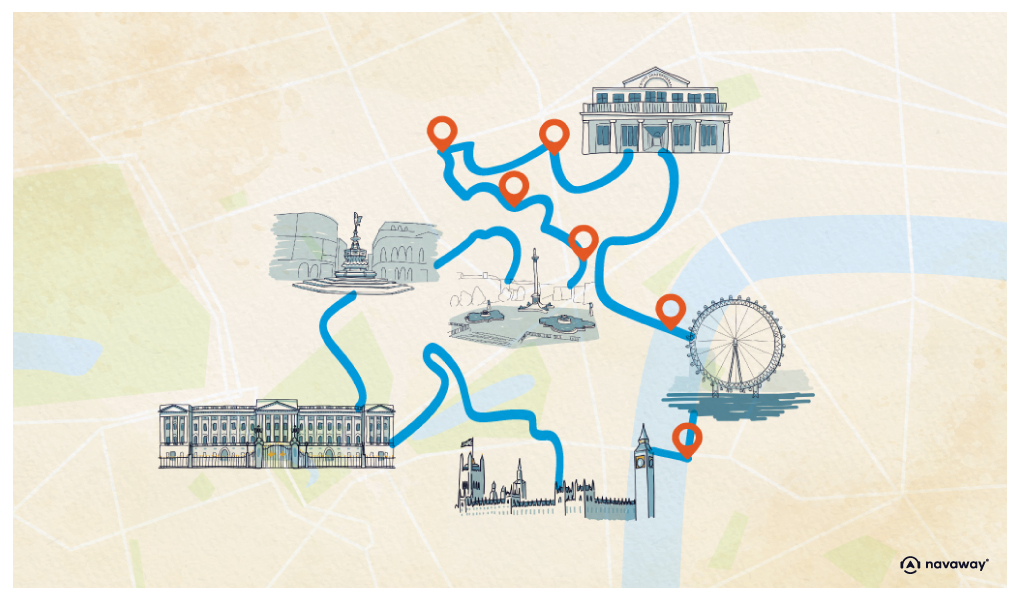
6. Scotland: guising and Celtic traditions
Scotland also claims a strong link with the origins of Halloween. The tradition of “guising” is particularly strong here: unlike the simple American “trick or treat”, Scottish children have to earn their treats by putting on a little show (song, joke, poem or magic trick) at each door. This custom dates back to the ancient celebrations of Samhain and encourages the creativity of the youngest children.
The Scots also play traditional fortune-telling games during Halloween. Dooking for apples” involves catching apples floating in a basin of water, using only the mouth. There’s also treacle scones, where treacle-covered scones are hung on strings and participants have to eat them without using their hands.
Scotland’s capital, Edinburgh, organises spectacular festivities every year. The city, already renowned for its ghost stories and gothic atmosphere, lends itself perfectly to Halloween celebrations. Torch-lit parades illuminate the cobbled streets of the Old Town, while Edinburgh Castle offers special night-time tours recounting the most terrifying legends of Scottish history.
200 audioguided tours for cities all around the world
Download7. Philippines: Pangangaluluwa and the Catholic tradition
In the Philippines, a country with a strong Catholic tradition, Halloween is celebrated through the custom of Pangangaluluwa, which takes place during the night of 31 October to 1 November. This ancestral practice combines pre-Hispanic Filipino beliefs with the Spanish Catholicism introduced during colonisation.
During Pangangaluluwa, groups of children and adults, often dressed as angels or souls from purgatory, go from house to house singing traditional songs in Tagalog. They ask residents to pray for the souls of the deceased, and in return receive sweets, food or money. This tradition is reminiscent of both the Western ‘trick or treat’ and the old English custom of ‘soul cakes’.
Filipinos also visit cemeteries en masse during this period. 1 November (All Saints’ Day) and 2 November (Day of the Dead) are public holidays when families gather at the graves of their loved ones, cleaning them, decorating them with flowers and candles, and sometimes spending the whole night at the cemetery in an atmosphere that is both contemplative and festive.
8. China: the ghost festival and ancestral traditions
In China, although Halloween in the Western sense is not traditionally celebrated, the country does have its own festival of the dead called Zhongyuan Jie or Ghost Festival, which takes place on the 15th day of the seventh lunar month (generally in August). According to Taoist and Buddhist beliefs, during this period, known as ‘Ghost Month’, the gates of hell are opened and the spirits of ancestors and tormented souls return to earth.
To appease these spirits and honour the dead, the Chinese perform a number of rituals: they prepare elaborate meals that they symbolically offer to the dead, burn incense and paper money (known as ‘ghost money’), and hold religious ceremonies. Floating lanterns are lit and placed on rivers and lakes to guide lost souls to the afterlife.
In Hong Kong, the Festival of Ghosts gives rise to some particularly spectacular celebrations. Traditional Chinese operas are staged in the open air, with the front row of seats left empty for the spirits. Impressive fireworks illuminate Victoria Harbour, and there are cultural exhibitions explaining ancient traditions. Although this festival does not coincide with Halloween, it shares the same theme of the border between the world of the living and that of the dead.
9. Japan: Obon and the growing influence of Halloween
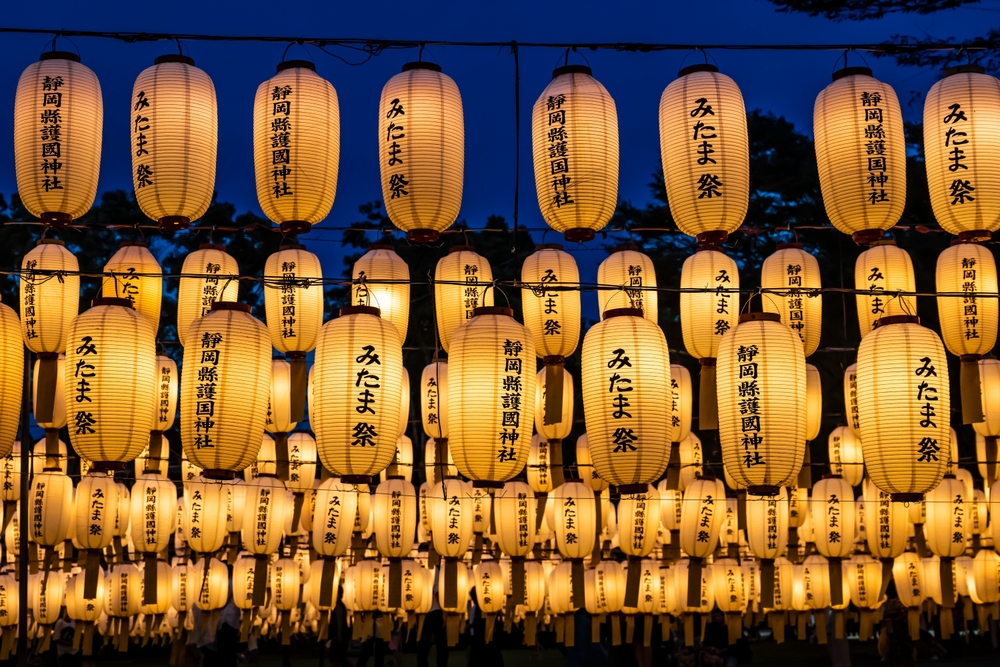
In Japan, the traditional festival honouring the dead is called Obon (or simply Bon) and usually takes place in midsummer, in August. This 500-year-old Buddhist celebration is a time when the Japanese believe that the spirits of their ancestors return to visit the living. Families return to their hometowns to clean family graves, make offerings and light lanterns to guide the souls.
The Bon Odori dances, traditional shows performed in a circle around a central tower, are the highlight of the festivities. These graceful choreographies tell ancestral stories and vary from region to region. At the end of the festival, thousands of floating lanterns called tōrō nagashi are placed on rivers and the sea to lead spirits back to the afterlife, creating a moving visual spectacle.
However, since the 2000s, Halloween has become increasingly popular in Japan, particularly among the younger generation. In Tokyo, the Shibuya district is transformed every 31 October into a gigantic gathering of people in fancy dress. Tens of thousands of young Japanese wear elaborate costumes, often inspired by manga, anime or Japanese pop culture. Theme parks such as Disneyland Tokyo and Universal Studios Japan also offer special Halloween events that attract huge crowds.

10. Australia: Halloween in the southern hemisphere
In Australia, Halloween is a relatively recent import that is gradually gaining in popularity, particularly among the younger generation. What makes it special? The festival takes place in the Australian spring rather than autumn, which creates an interesting contrast with the traditional imagery of Halloween associated with dead leaves and chilly evenings.
In Brisbane, the capital of Queensland, a unique tradition has developed: the Zombie Walk. Every year, thousands of Australians put on make-up and dress up as the living dead to recreate a veritable invasion of zombies on the city’s streets. The aim is to be as terrifying as possible, with ripped clothes, fake blood and sophisticated make-up. This offbeat event has become an eagerly awaited fixture, attracting participants and curious spectators alike.
In other Australian cities such as Sydney and Melbourne, shopping centres and amusement parks organise Halloween events for families. Trick-or-treating is gradually developing in some residential areas, although the practice remains less widespread than in the United States. Australians adapt Halloween to their own culture, creating a unique blend of imported traditions and local initiatives.
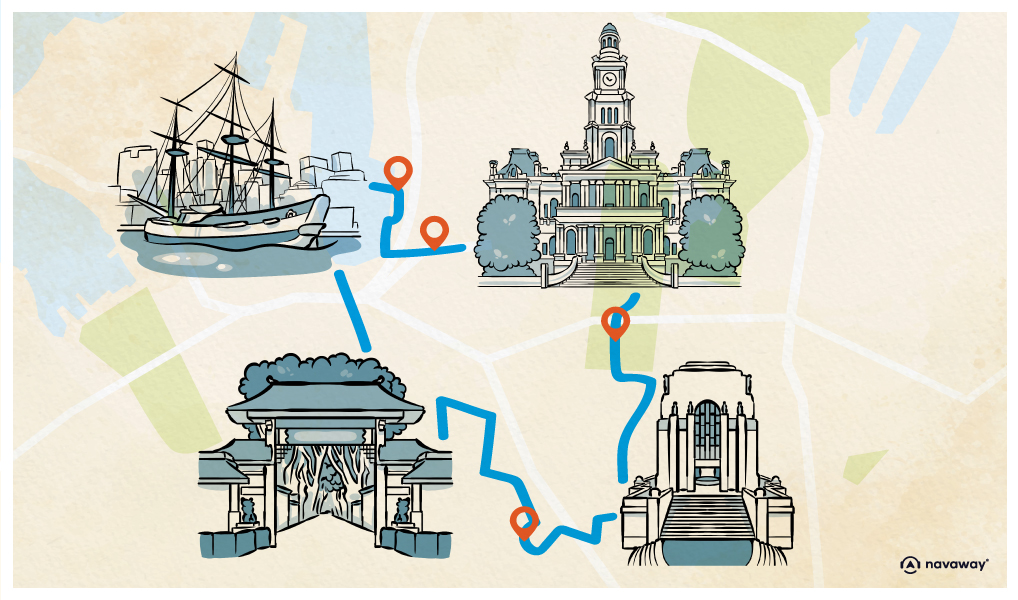
11. Guatemala: All Saints’ Day and giant kites
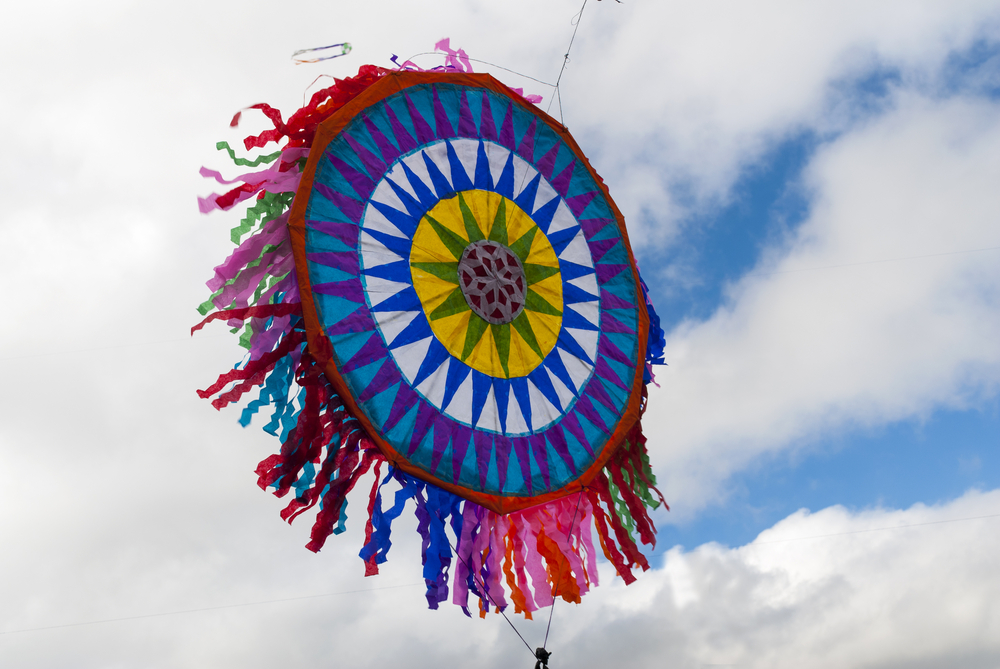
In Guatemala, a Central American country with a strong Mayan and Catholic tradition, Halloween merges with the celebrations of All Saints’ Day and the Day of the Dead. One spectacular tradition in particular sets this country apart: the Giant Kite Festival held every 1 November in the villages of Sumpango and Santiago Sacatepéquez.
According to local beliefs, these colourful kites, some of which measure up to 20 metres in diameter, serve as a bridge between the world of the living and that of the dead. Flying them enables the souls of the dead to communicate with their loved ones back on earth. The production of these monumental works of art in tissue paper takes months of preparation and mobilises entire communities. The complex geometric patterns that adorn them often represent ancestral Mayan symbols.
Guatemalan families also visit cemeteries to decorate the graves with flowers, particularly orange and yellow marigolds. They picnic at the graves of their loved ones in a festive and colourful atmosphere, sharing the favourite dishes of the deceased. On 7 December, another unique celebration takes place: the Quema del Diablo (immolation of the devil), where an effigy of the devil is burnt in the streets to purify homes and chase away evil spirits before Christmas.
12. Haiti: voodoo and the Gédés festival
In Haiti, Halloween has a profound spiritual dimension, with the Fête des Gédés (or Fèt Gede), celebrated on 1 and 2 November. This voodoo festival, a unique blend of African beliefs brought by slaves and Catholicism, honours the Gédés, the spirits of death and fertility in the Haitian voodoo pantheon.
Baron Samedi, the emblematic figure of voodoo depicted in a top hat, dark glasses and cane, is the most famous spirit of this family of loas (deities). In Port-au-Prince, the capital, the cemeteries become the scene of impressive ceremonies. The faithful, dressed in black, purple and white, gather around the oldest tomb in the cemetery, considered to be the spiritual home of Baron Samedi.
Participants dance, sing, drink rum and kleren (a local brandy), smoke cigars and spit rum on the graves as a sign of offering. The voodoo priests (houngans) and priestesses (mambos) go into a trance and are possessed by the Gédés, who then express themselves through them with crude language and saucy jokes, reflecting the provocative nature of these spirits. This colourful celebration is a reminder that death is an integral part of life and should be honoured with respect but also with joy.
13. Taiwan: the Lantern Festival and Ghost Month
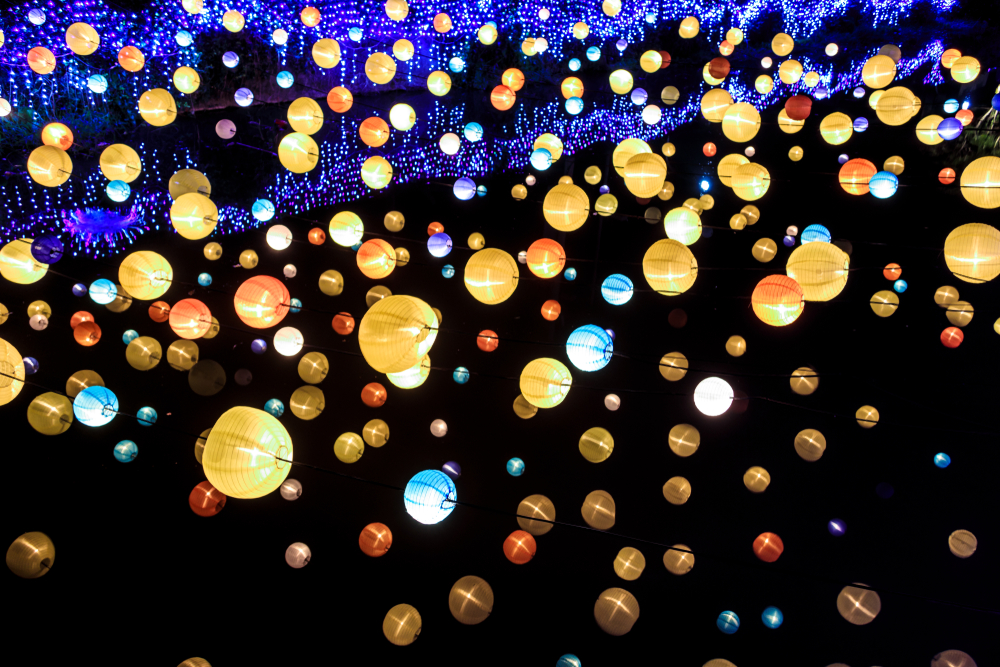
In Taiwan, the celebration of the dead takes the form of the Lantern Festival and Ghost Month, which share similarities with Chinese traditions but have their own distinctive features. The Lantern Festival takes place on the 15th day after the Chinese New Year and marks the end of the New Year celebrations. This bright and colourful festival contrasts sharply with the dark imagery of Western Halloween.
Thousands of traditional lanterns, often in the shape of Chinese zodiac animals, light up Taiwanese cities. The festival is celebrated in a different city each year, with acrobatic displays, dragon and lion dances, and spectacular fireworks. In Yanshui, a nearly 200-year-old pyrotechnic event attracts the most daring: tens of thousands of firecrackers are fired simultaneously, creating a spectacle that is both dangerous and fascinating.
Ghost Month (usually in August) is a time when Taiwanese believe that the doors between worlds are opening. During this month, considered to be unlucky, people avoid moving house, getting married or swimming. Offerings of food are left in the streets for wandering spirits, and religious ceremonies are organised to appease tormented souls. These traditions show how different cultures deal with the universal theme of death and the memory of ancestors.
In conclusion, this journey through the world’s Halloween traditions reveals the richness and diversity of the ways in which humanity celebrates the boundary between life and death. From the Irish Samhain to the Mexican Día de los Muertos, from the Chinese Ghost Festival to the Haitian Fête des Gédés, each culture brings its own interpretation to this time of year when the veil between the worlds thins. Whether you prefer the spooky atmosphere of American Halloween, the colourful joy of Mexican celebrations or the mystical atmosphere of Transylvania, these traditions remind us that behind the cultural differences lies a universal need to honour those who have gone before us. If you would like to discover these destinations during your travels, don’t hesitate to explore the tours offered by Navaway to visit these fascinating cities and their unique traditions.
FAQ: Everything you need to know about Halloween around the world
Where does Halloween come from?
Halloween originated in Ireland with the Celtic festival of Samhain, celebrated over 2,500 years ago. This celebration marked the end of summer and the beginning of the dark season, a time when the boundary between the world of the living and that of the dead was considered to be thinner.
Which countries celebrate Halloween the most?
The countries that celebrate Halloween the most are Ireland, the United States, Canada, the United Kingdom (England, Scotland), Australia and, more recently, Japan. Mexico celebrates Día de los Muertos, a similar but distinct festival that takes place on the same days.
What’s the difference between Halloween and Día de los Muertos?
Halloween is a festival of Celtic origin that focuses on spookiness and protection from evil spirits, while Día de los Muertos is a joyous Mexican celebration that honours the dead with bright colours, offerings and altars. Día de los Muertos is more a family celebration of remembrance than a fancy dress party.
Why is Japan celebrating Halloween now?
Halloween was adopted in Japan in the 2000s, mainly as a commercial and cultural festival popular with young people. The Japanese appreciate the festive aspect and the opportunity to dress up, particularly as manga and anime characters. The Shibuya district of Tokyo has become the centre of Halloween celebrations in Japan.
Where can you celebrate Halloween in Europe?
For an authentic Halloween experience in Europe, head to Ireland (Dublin or Derry), Scotland (Edinburgh), England (London) or Transylvania (Sighișoara and Bran Castle in Romania). These destinations offer celebrations rooted in historic traditions with a unique atmosphere.
What are the most unusual Halloween traditions?
Among the most unusual traditions are the Pangangaluluwa in the Philippines (songs for the souls), the Giant Kite Festival in Guatemala, the Voodoo Gede Festival in Haiti, the Zombie Walk in Australia, and soul cakes in England. Each of these traditions offers a unique perspective on the celebration of death and remembrance.
200 audioguided tours for cities all around the world
Download